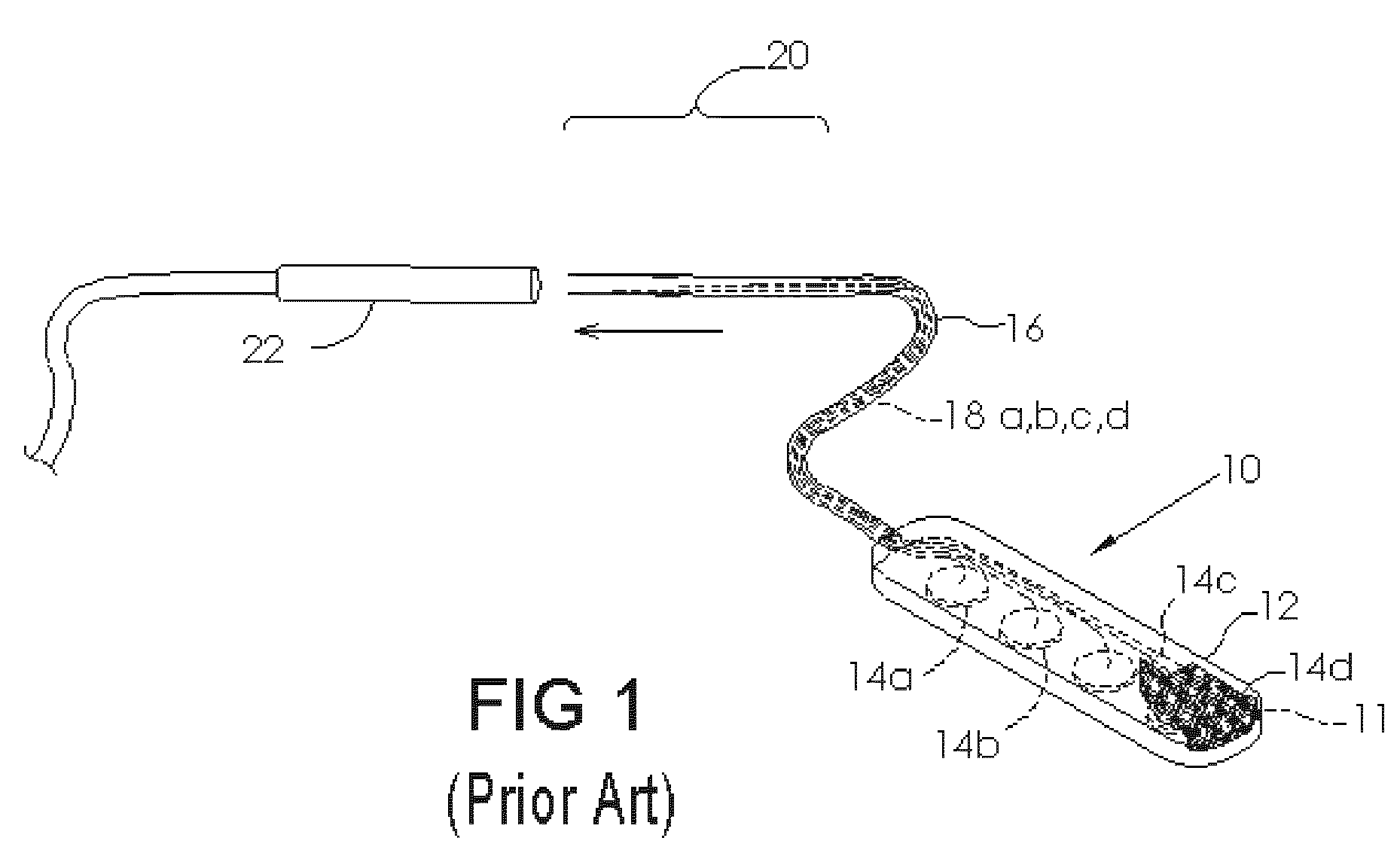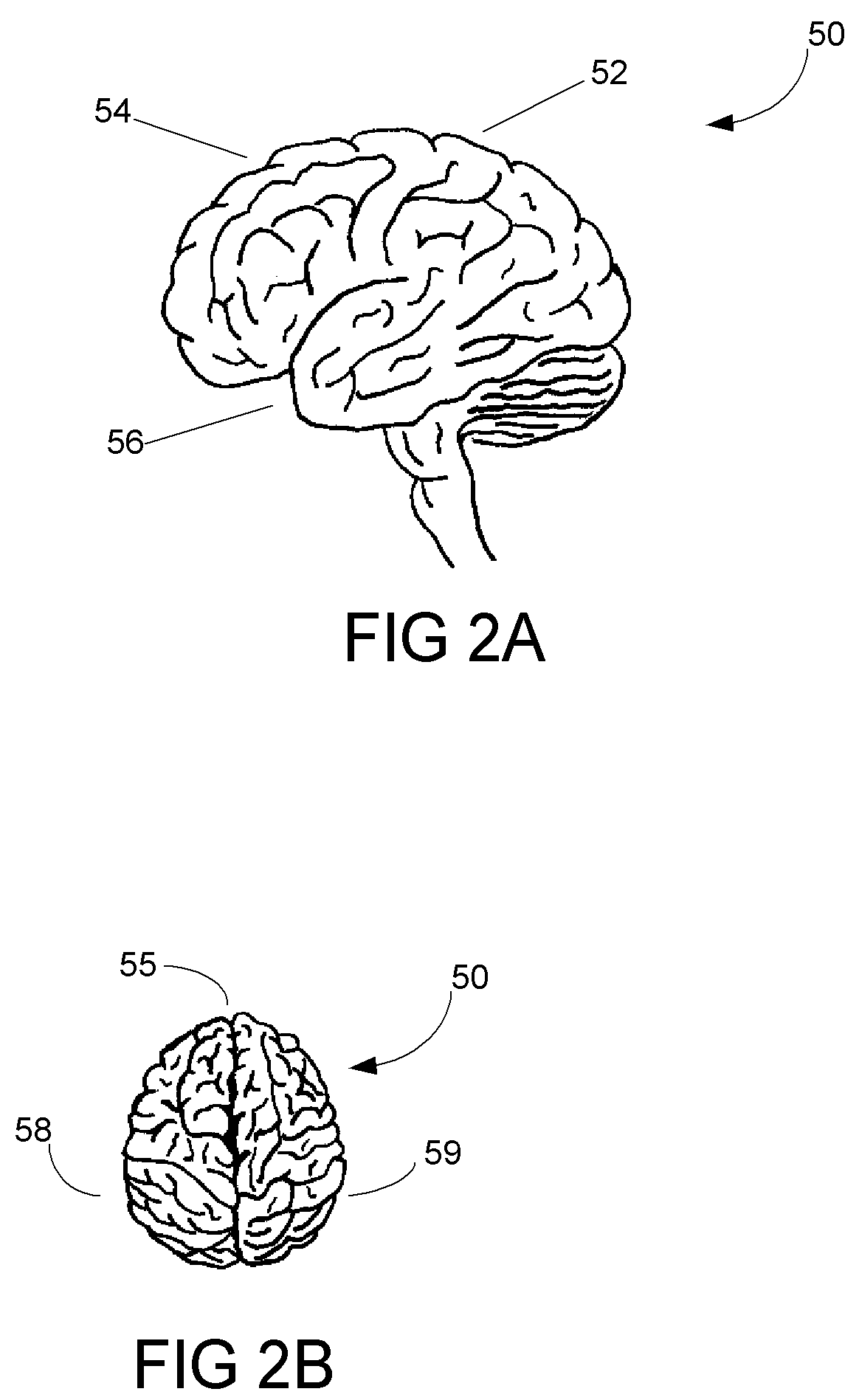Articulated neural electrode assembly
a neural electrode and assembly technology, applied in the field of articulated neural electrode assembly, can solve the problems of loss or impairment of neural function, many problems or abnormalities, and difficulty in effectively treating such abnormalities
- Summary
- Abstract
- Description
- Claims
- Application Information
AI Technical Summary
Benefits of technology
Problems solved by technology
Method used
Image
Examples
Embodiment Construction
[0033]The present disclosure describes various embodiments of apparatuses, devices, and / or systems that may be configured to apply or deliver neural stimulation to a patient, for example, at one or more cortical and / or other neuroanatomical sites; and associated procedures directed toward the use of such apparatuses, devices, and / or systems. Depending upon embodiment details, one or more portions of apparatuses and / or systems described herein may alternatively or additionally be configured to sense or monitor neuroelectric activity within a patient, for example, at one or more cortical and / or other neuroanatomical sites.
[0034]Stimulation systems and / or methods described herein may be used to treat a variety of neurological conditions and / or neurologic deficits associated with, for example, stroke, cerebral palsy, multiple sclerosis, movement disorders such as Parkinson's Disease, and / or neuropsychiatric disorders such as depression. Depending on the nature of a particular condition,...
PUM
 Login to View More
Login to View More Abstract
Description
Claims
Application Information
 Login to View More
Login to View More - R&D
- Intellectual Property
- Life Sciences
- Materials
- Tech Scout
- Unparalleled Data Quality
- Higher Quality Content
- 60% Fewer Hallucinations
Browse by: Latest US Patents, China's latest patents, Technical Efficacy Thesaurus, Application Domain, Technology Topic, Popular Technical Reports.
© 2025 PatSnap. All rights reserved.Legal|Privacy policy|Modern Slavery Act Transparency Statement|Sitemap|About US| Contact US: help@patsnap.com



